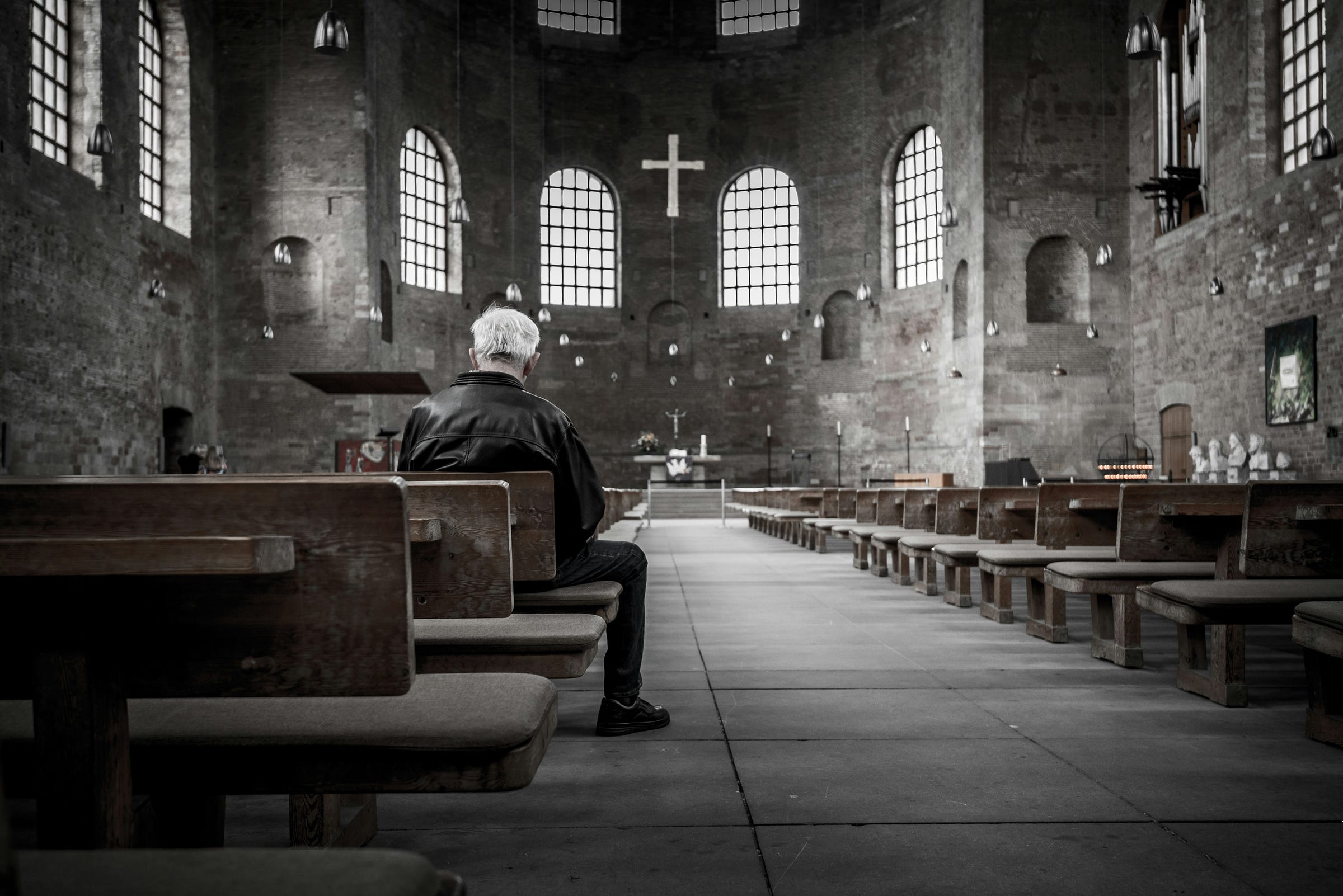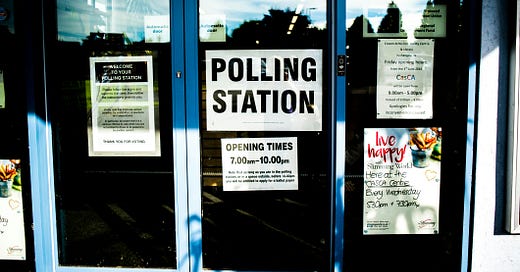

About the author: Rev. Catherine Tobey is a PhD student in theological ethics at the University of Aberdeen. Drawing on Karl Barth’s theology, her research centers children as the dynamic, interpretive key to understanding and witnessing to the Kingdom of God. She is a minister in the Presbyterian Church (USA) and a resident at Tall Timber Ranch, a camp and retreat center in Leavenworth, WA.
When the newly elected Moderator of the General Assembly of the Presbyterian Church (U.S.A.) visited our seminary campus, he was kind enough to give blunt answers to the students’ questions. One of my classmates asked how he understood his role in the church, and he replied with something like, “To accompany it unto a peaceful death.”1
It is hard to imagine a less motivating response to a roomful of hopeful pastors, but at least it gave us something interesting to discuss in the following months.
Why were churches dying? What factors contributed to this failure? What were we supposed to do about it?
Perhaps things are not going great in your congregation and you find yourself amid similar conversations. At the end of the day, there is not enough money, not enough volunteers, not enough young families. The only thing there is more than enough of is property and facility issues. What are we to do, then, if that is all our churches have?
In his 1964 text God Here and Now, Swiss theologian Karl Barth writes, “It is unhappily the case that the threat to the Church is acute at all times and everywhere.”2 This feels oddly affirming. “Maybe the problem isn’t us,” we might wonder, “maybe it’s just the way Church is.” Unfortunately, we could not be further from the truth. In fact, for Barth, the ever-looming threat to the Church is such congregations that have become so focused on themselves that they get sleepy.
Let me be clear: our churches do not need to try harder by pulling ourselves up by our bootstraps and pushing past our weariness to embrace a supposed Manifest Destiny. Barth is actually quite specific about what sleepy-eyed Christians look like. He writes:
[Sleepy-eyed churches] know the Bible, the ancient creeds, confessions of faith, and their catechism. They acknowledge their authority. They nod their heads in earnest faithfulness and say obediently, Yes, Yes! But they have already missed the point, that the old words, yes, the witness of God, are an address directed to them, an address to which they must answer here and now with their own words, with their own lives, in dialogue with the needs and tasks of the present world.3
The threat to the Church is those who “have fallen in love with themselves in the form of their own form of Christendom which has been handed down to them.”
Herein, the problem is not the churches who try new things, but those who are blinded by “honorable forms of faith and worship” and their cozy relationship with the state. Rather than being rooted in the community, these congregations exist “in a self-made world of their own religious dreams,” abusing the Bible as if it were “verbal material for their own thoughts.” Here, Barth describes the gospel being reduced to a source of personal comfort, rather than good news for the oppressed.4
The sneakiest part about this is how we settle into comfortable rhythms over time—when churches fall asleep, there is no going-out-of-business sale. Barth describes this, saying, when “the Church ceases to be the Church…the horizon does not become clear…a simple vacuum is not the result.” Rather, “something which seems to be and look like the Church, though not deserving that name, remains on the scene.” Though it might look, walk, and talk like the Church, all that remains is “an institution, dogma, program, and problem.”5
We find ourselves amid “many dead and apparent churches,” because we have not been “caught up in reformation,” at least according to Barth. Starting with the brokenness of religious institutions, Barth insists polity must be re-created so that it will “present the least possible resistance” to Christ’s renewal and “guarantee…the maximum degree of being open, free, and at the disposal of Him and the reformation which He accomplishes.”6
Is this what the governance of your congregation, presbytery, and seminary is like?
Barth tears down religious institutions in three movements:
He stuns congregations with the idea that we cannot self-determine our ecclesiastical nature; only God gathers the Church, so “the Church surely does not exist in the individuals who have gathered together of their own choice.”
Then Barth turns to our chosen leaders, insisting, “the Church also does not exist as ordained representation of Jesus Christ to the congregation…whether one means the order of pastor or the order of presbyter.”
Barth’s conclusion humbles the upper echelon, as he writes, “The Church exists even less in any sort of authority over the congregation in the office of a bishop or in a hierarchy, and it also does not exist in the representatives of these congregations sitting together in synod…or in their executive committees.”7
If this is not enough to ruffle feathers, let us put it another way: Though we may take our sweet time “pondering, studying, discussing, and preparing” for “relationship with the world,” we only exist as God’s Church when “actually accomplishing this relationship.”8 We may have had good intentions, but along the way, we have gotten bogged down by the idea of the Church and maintaining it as an institution rather than a living community. And institutionalism is exhausting.
We have worn ourselves out by coddling leaders who act more like bullies than stewards. Any remaining energy has gone to navigating fragile egos, unethical investments, and out-of-touch bureaucracies. As genocide, greed, and greenhouse gases overwhelm our most vulnerable neighbors, we keep playing pretend as if the church were Barbie’s Dreamhouse. If that seems dramatic, consider the way we continue to tuck seminarians into ivory towers, teaching them to uphold a dying institution and calling it “preparation for leadership.”
This Lent, as we reckon with our mortality, I wonder how we might also reckon with the mortality of the institutional church. I wonder when we will prune the dead parts of our institutions—the ones asking us to turn our back on those who are suffering. But, most of all, I wonder what would happen if we believed more in the life of the church than in its death.
In his Church Dogmatics, Barth lifts up children as symbols of the new creation. Indeed, he describes a future where, “illuminated by God,” parents “realize the superior wisdom of their children and thus accept their testimony, abandoning their opposition and approving their decisions.”9 I can not help but wonder if the way forward for churches is centering their focus on young people.
I do not mean to suggest we paint the the children’s wing a bright color and make pop culture references in sermons, but that we would truly look to young people for their insight. Not only are kids experts at connection, but their energy is enviable and their imaginations limitless. What do they think is important about being the Church? What kind of world do they want to live in and how can we be a part of making it happen?
Perhaps repenting of our failure to be God’s Church in the world starts with admitting the Kingdom of God belongs to kids, not adults. Children are always slightly beyond our grasp; plus they are always changing, sustain a sense of urgency, ask challenging questions, and speak difficult truths. This is all deeply unsettling for many of our sleepwalking institutions.
I wonder, though, if our churches are doing no more than sleepwalking until we hand over God’s Kingdom to its rightful proprietors. Maybe the best place to start is asking if we are more comfortable in a zombie-like existence than we are with the antidote of taking the young people of our churches seriously.
In the following ten years, the PC(USA) has, in fact, seen a 15% decrease in congregations and a 38% decrease in members. See this report.
Karl Barth, God Here and Now (London: Routledge, 2003), 84. This book was first published in English in 1964 and is a compilation of various essays published in German between 1939 and 1950.
Ibid., 85.
Ibid., 86.
Ibid., 88–89.
Ibid., 90, 93.
Ibid., 94.
Ibid.
Karl Barth, Church Dogmatics, 4 vols. in 13 pts, ed. G.W. Bromiley and T.F. Torrance (Edinburgh: T&T Clark, 1956–75), III/4, 267.

















Wow. That was profound.
The threat to the Church is those who “have fallen in love with themselves in the form of their own form of Christendom which has been handed down to them.”
I can see this in my own church and experience. When we disconnect the church experience from both the world around us, and even God, but rather live in our own comfortable traditions, we are in decline already.
Thank you for a very enlightening perspective of the actual condition of the Church. It very much apply to the present state of the evangelical lutheran Church in Denmark. I very much liked the description of the Church as Barbies Dreamhouse and the lack of spirituality as zombie like. The latter description having a humoristic touch.